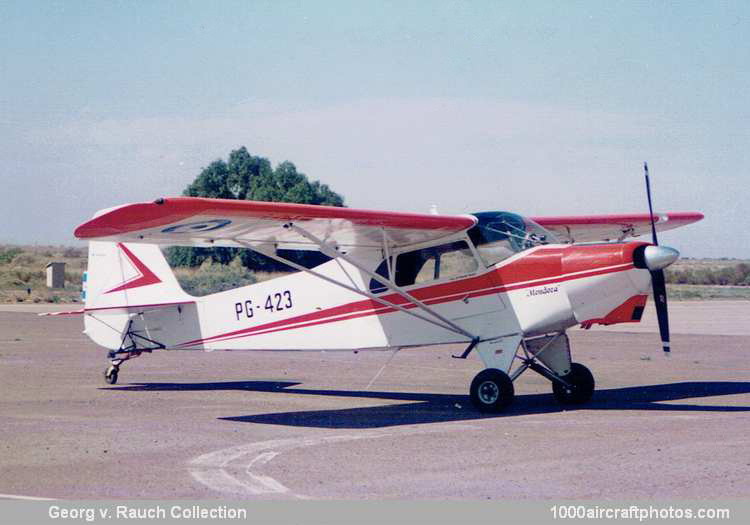07/31/2018. Remarks by Johan Visschedijk: "In the mid-1950s, DINFIA (Dirección Nacional de Fabricaciones e Investigaciones Aeronáuticas) of Argentina developed a high-wing light aircraft for crop spraying and general club flying and glider towing. Designed by José Fouad Elaskar, the I.A.46 was of fairly conventional aluminum-tube construction covered with fabric, it had a forward pilot's seat and a rear bench seat for two passengers. It was powered by a 150 hp Lycoming O-320-A2B engine and for crop spraying it used an external 105.7 gal (400 l) spray tank. The I.A.46 was named Ranquel in tribute to a tribe who lived in Patagonia until the Conquest of the Desert in 1880 and their extermination. The prototype was first flown by Pedro Rosell on December 23, 1957 and went into production at Cordoba the following year.
The Super Ranquel was similar, but had a more powerful 180 hp Lycoming O-360AlA engine. Named after another of a tribe from Patagonia, a subsequent version was the I.A.51 Tehuelche, which was a developed Super Ranquel with metal covering to the wings, larger flaps and agricultural load capacity raised to 132.1 gal (500 l). Registered LV-X-26, the prototype of this variant first flew on March 16, 1963, later reregistered LV-IMF, this version did not enter production.
At least 133 Ranquels and sixteen Super Ranquels were built and two of each (serials PG-421 to PG-424) and the sole Tehuelche (serial 416) served with the EAM (Escuela de Aviación Militar, Military Aviation School) of the FAA (Fuerza Aérea Argentina, Argentine Air Force) at Cordoba as glider tugs."
